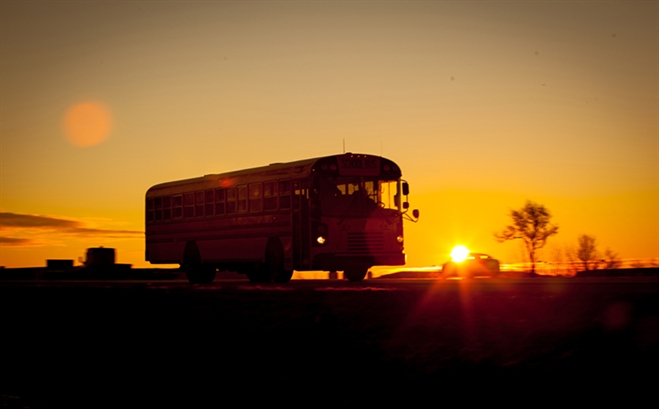Districts Deliver Support With Traversa
April 24, 2020 by Anonym

In a crisis, the technology at your fingertips can either help you respond quickly and effectively, or it can hinder your ability to do what needs to be done. We recently reached out to two of our districts to understand how their routing technology is helping them solve the new challenges COVID-19 presents as these crop up in real time.
Kyle Fuller, head bus driver from Bainbridge-Guilford Central School District in New York, shared how having the right tool in his district’s arsenal helped them pivot successfully during the COVID-19 pandemic when schools shut down.
The Bainbridge-Guilford transportation department was tasked with delivering meals to the district’s families soon after their schools were shut down for the rest of the semester. The district uses Traversa for routing, which helps them store and easily access student information. When Kyle found out that the transportation staff would be delivering meals, he “was really happy that [all the data] was there on the computer.” He was able to recreate runs and stops based on the locations of the families in need.
The district is currently serving more than one hundred meals twice a week split between two routes. Kyle shared how quickly he was able to update their existing routes and get updated information to the drivers, saying, “The student summary at the end of each run was perfect because it has the names, the address, and the phone numbers. It tells [the drivers] everything that we need.”
Although the Bainbridge-Guilford transportation department is unsure of what the future brings, they are rallying around one another. “The superintendent makes calls to everybody once or twice a week with new information,” he said. Kyle also checks in with the drivers to see how he can support them and makes sure they have materials to keep up with their testing and DOT inspections. According to Kyle, Traversa made delivering meals to Bainbridge students a “piece of cake,” which we hope is on the school menu.
We heard a similarly uplifting story from our friends at Berne-Knox-Westerlo Central School District in New York. Not only is the district using four new routes built in Traversa to provide five breakfast meals and five lunch meals per week to the students who typically receive this assistance, but the district also recognized the potential impact the pandemic could have on families who did not previously qualify. “We wanted to encompass everybody in the district because now that some families have lost jobs, they need to be on that program and get that extra food, so we’ve encompassed everybody in the district,” said Amy Santandrea, the district’s director of transportation. “We added them to the routes, so we have four school bus routes that go out now every Monday morning.” In addition to delivering these meals, the district participates in a local food bank program to fill and deliver backpacks full of food for the weekend to the most food-insecure students.
Berne-Knox-Westerlo is looking for creative ways to make additional use of its fleet and meet students’ and parents’ needs during the school shutdown. “We have five locations in our district where we’re deploying Wi-Fi hot spots,” Amy told us. “Because not everybody is able to access the internet. We picked locations where people can drive up, sit next to the bus, and the Wi-Fi password information is on a sign taped to the bus. They sit there in their cars, and they do the schoolwork. We’re trying to think of a few more locations because it is a rural area. Sometimes service is spotty, and sometimes people can’t afford to have the internet, so I just want to make sure that kids are getting what they need.”
According to Amy, Traversa technology has been key to ensuring these vital services reach the most vulnerable people in her community during the state of emergency in New York. “You can apply for the FEMA money, but FEMA is going need to have documented proof that you are able to do these things, either when the buses go out for the hotspot locations or delivering the food. We’re proving that with the mileage in Traversa, what the mileage was when they returned, how many hours they were out there, and where they were for the location. If I didn’t have the software to be able to go in and make these routes and see all the kids that were on there, it would have been a nightmare. And later on down the road if the school district applies for FEMA money, we will be able to show that, yes, these are the routes that we traveled, and these are the miles that we use to deliver the food. And any paperwork that we’re going to need to do, this is going to be important for that.”
The entire team at Tyler is in awe of the ingenuity and compassion of our clients, and we are so impressed with the creative ways they have found to serve their communities. If your district is employing creative tech-based solutions during the pandemic, we encourage you to reach out and let us know.
Contributions from Tyler employees Emily Sullivan and John Weisz